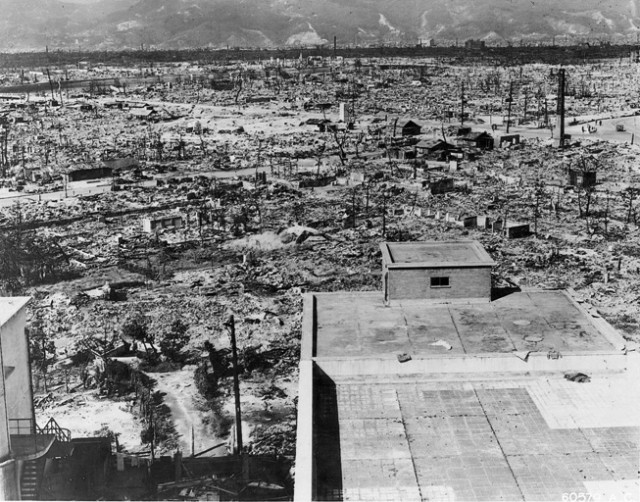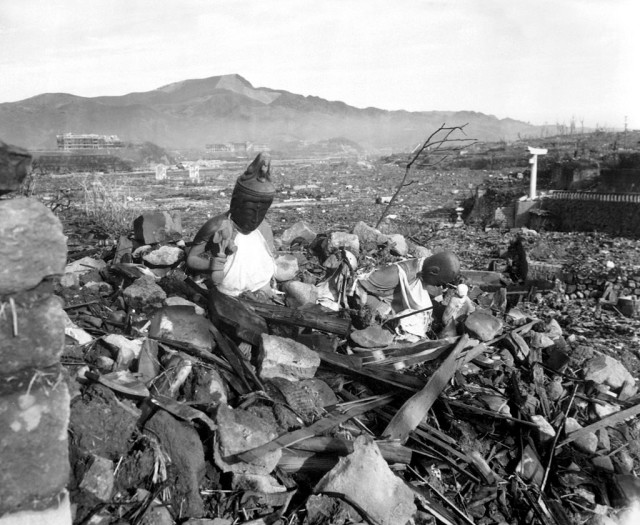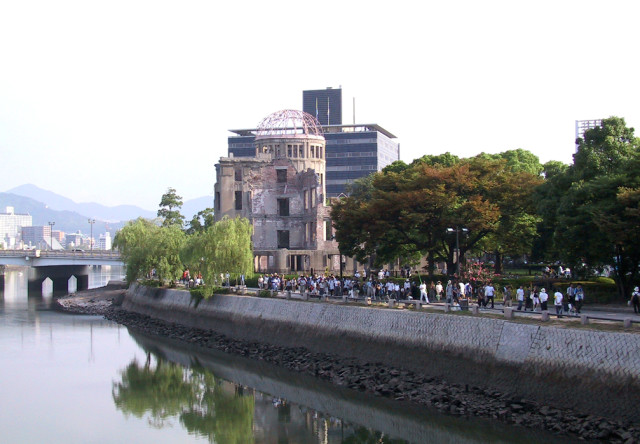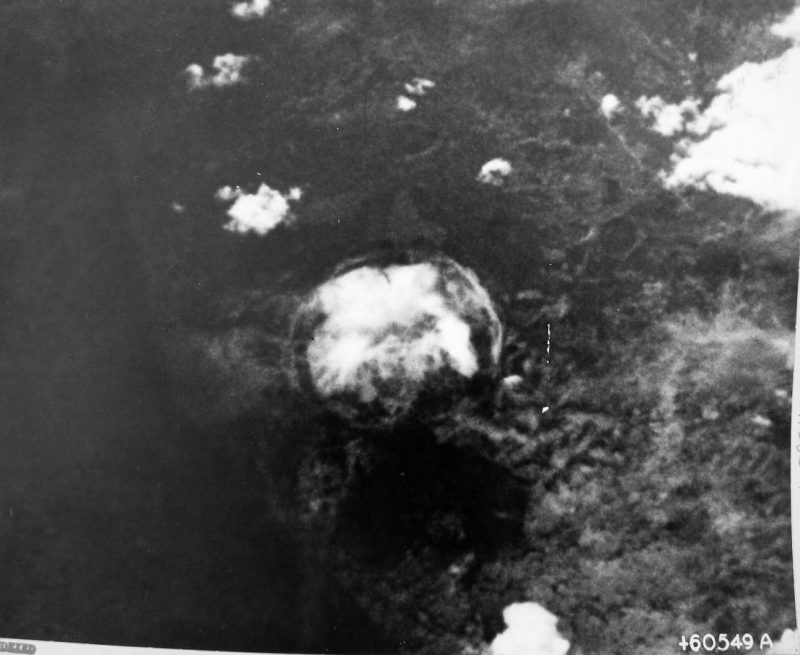The exact death toll of the 1945 atomic bombings of Hiroshima and Nagasaki is not known. Reports say the total combined death toll of the cities is between 129,000-240,000 while others say it could be higher. What we do know, is that in August of 1945, the United States military dropped a new type of bomb on Hiroshima.
The atomic bomb used was called “Little Boy.” Sixteen hours after the bomb was dropped, President Truman asked Japan to surrender. When they didn’t agree, the United States dropped another atomic bomb, this time on Nagasaki. The second bombing occurred just three days after the bombing of Hiroshima.

About half of the deaths occurred the first day when the bombs were detonated. The atomic bombs were detonated in the sky, a little over 1,500 feet above the ground. This allowed for optimal destruction. The remaining deaths occurred over the next few months, and years. Many of these lives were taken due to burns, radiation, and cancer.
The long-term effects of the bombings are something that has been studied time and time again. In 1945, no one really knew how it would affect the people or the environment. Many expected the cities to become nuclear wastelands, something you might see in a video game or a movie. This was not so, but the people and their future generations did suffer. Here are several of the long term effects, caused by the atomic bombings on the two cities.

Leukemia Increased
Over the next few years, the cities would see a spike in leukemia. This was the most deadly long-term side effect. The spike occurred around two years after the bombing and hit its peak around 1950. It has been estimated that those involved in the blast had a 46 percent chance of getting leukemia. Other types of cancer did see a spike in the amount of diagnosis, it just didn’t occur until around 1955.
Other cancers that saw an increase were thyroid cancer, lung cancer, and breast cancer. Women were more likely to developed thyroid cancer, which was diagnosed by doing an autopsy. The first case of thyroid cancer in regards to the blast wasn’t reported until 1957. Lung cancer was linked to the bombings in the early 1950s, and in a 1972 survey, almost 3,800 people (of 10,412) who had died from the blast or related to the blast, were found to have developed lung cancers.
Lastly, there was an increase in breast cancer. Women aged 22-30 were at a higher risk of getting breast cancer if they were exposed to more than 100 rads. It was believed that those exposed to radiation were three times as likely to develop breast cancer, than someone who wasn’t exposed to radiation.
Increase in Anemia
There was a noted increase in patients with anemia, which is a disease where your blood doesn’t create enough red blood cells. The effects of this lasted as long as ten years in some individuals.
Increase in Cataracts
Cataracts are when the lens of the eye becomes foggy. This can take several years to develop, and was first found to be an issue three years after the bombs were dropped. Age and distance to the bomb played a big factor in those who developed cataracts. In the mid-1950s, at the Hiroshima Red Cross Hospital, there were 435 survivors screened, and 116 had developed cataracts. Of that 116, 87 were within two kilometers of the bomb blast. Cataracts in patients were caused by high radiation levels.
Keloids
In 1946, keloids began to develop. This is where a scar is healing and essentially heals too much, causing it to swell, and can result in abnormal growth. It is believed this is caused by radiation. The scar tissue that would grow would end up looking similar to a crab, which is where the growth gets its name from. Keloid is Ancient Greek for crab. Those who were within one kilometer of the blast were 60 percent more likely to develop the keloids on their burn wounds.
Birth Complications
There were only a handful of surveys of this, but one completed in Nagasaki showed a high rate of infant and neonatal deaths. The survey looked at 98 pregnant women who were exposed within 2 kilometers of the blast, as well as 113 women who had been exposed further away from where the bomb was dropped. The survey also noted that one in four babies born by survivors that were surveyed had cognitive disabilities. These children suffered in physical growth and development as well. Some of the children grew to be underweight and were born with microcephaly – a condition in which the head is smaller than it should be. Microcephaly can’t be cured, but it can be treated. Of total babies born, the number of birth defects was not unusual.
Effects on The Environment
When the bombs were dropped, everything was decimated. Everyone was worried the cities would become nuclear waste fields, where nothing could grow and there would be too much radiation for it to be safe to live. In 1946, there was some hope. The oleander flower began to grow, and the cities began to rebuild with help from Japan. Over time, the radiation levels have dropped, and today are considered safe.

The cities have long since been rebuilt and are thriving. As of 2010, Hiroshima had a population of 1.2 million. While Nagasaki had a population in 2009 of 446,000. The rebuilding of Nagasaki was slow. The first emergency temporary homes were not completed until 1946.
One man not only survived the blast in Hiroshima, he also survived the blast in Nagasaki as well. Tsutomu Yamaguchi was employed by Mitsubishi Heavy Industries and was a resident of Nagasaki. On August 6th, 1945, he was sent to Hiroshima to business.
Yamaguchi survived the blast and went home to Nagasaki the next day with wounds. He returned to work in Nagasaki on August 9th, 1945. That morning he said that he was telling his supervisor of a bomb that destroyed the whole town, the supervisor couldn’t believe him. Yamaguchi claims that at the end of this conversation, the A-bomb was detonated over Nagasaki. Yamaguchi was recognized by Japan for surviving in both cities where atomic bombs were dropped, he died of stomach cancer in 2010 at the age of 93.
The long-term effects of the bombings were felt through the landscape, the environment, and the people. Today, radiation levels are considered low and safe. While the towns have been rebuilt, you can still find some traces of the horror from the bombs in August of 1945.
